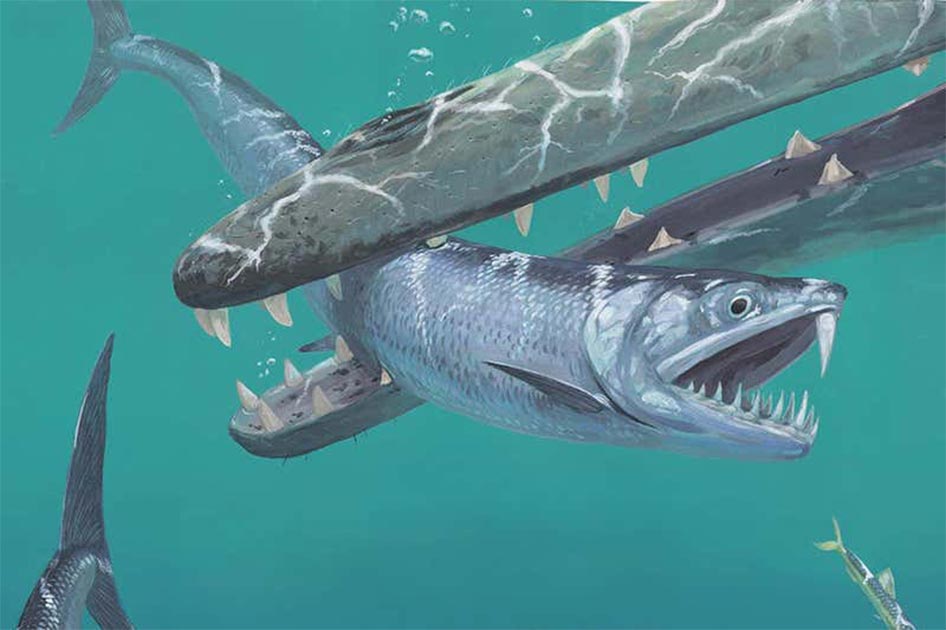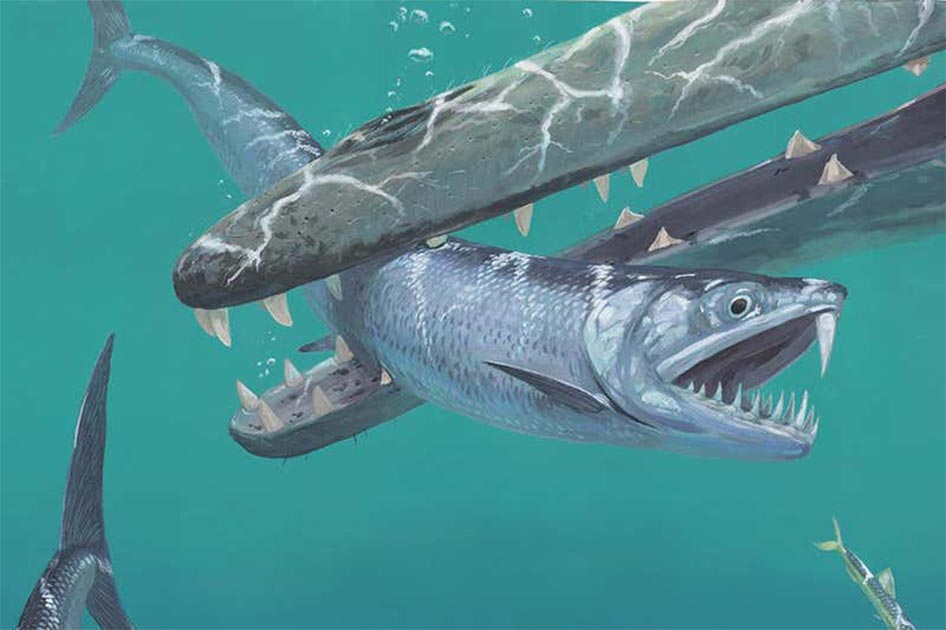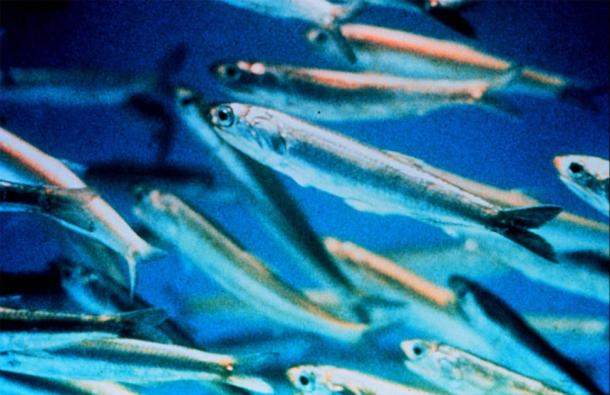

Scientists have made an amazing discovery about the humble anchovy. These small fish are usually found as a topping on a pizza. However, millions of years ago, they were saber-toothed predators who fed on other fish. This discovery of giant anchovies is helping scientists to better understand the period after the extinction of the dinosaurs some 66 million years ago.
A team of scientists from the University of Michigan examined the fossils of two prehistoric fish. According to The Daily Mail, they studied the fossils of two “closely-related species believed to belong to the anchovy family, called Clupeopsis straeleni and Monosmilus chureloide.” One fossil was found in modern Pakistan and the other in Belgium, and they both dated to around 55 million years ago. This is a period known as the Paleogene era (66–40 Million years ago). It was the time after the dinosaurs became extinct, probably because of an asteroid strike, in the Cretaceous period.
Images of Monstrous Anchovies
To better understand the prehistoric anchovy, they carried out a high-resolution CT scan of the fossils, which is a non-invasive procedure. They created remarkable images of the remains and compared them to the images of modern herrings and anchovies.

Pictured, the cranial anatomy of Clupeopsis straeleni (‘the giant anchovies’) as revealed by the CT scans. This extinct fish may have grown to be around 20 inches (1/2 meter) long and was likely a predator that ate other fish. Bottom left in light blue shows the sharp fangs on the bottom jaw. Bottom center reveals the large saber-tooth from the top jaw. Other images are scans or sketches of the fossil fragments. (Capobianco et al. / Royal Society Open Science)
The images showed that the prehistoric fish has protruding fangs and a single large sabre tooth. In the Royal Society Open Science, the researchers write that “most remarkable is the presence of a single, massive vomerine fang offset from the midline in both.” These anchovies had a sabre tooth that jutted out of their lower jaw. These are the teeth that one would expect from a predator. The New Scientist reports that “each of the fossilized skulls had teeth similar to carnivores.”
The Extinction of Dinosaurs
The dentures found in the prehistoric fish are much larger than those of modern anchovies, who are typically the prey of predators in their tropical or semi-tropical marine habitats. Current day species of the fish usually forage for food particles and are not aggressive. Based on the dentures studied by the experts, the two prehistoric anchovies used their long tooth to hunt. According to The New Scientist, the “the sabre tooth may have been used to trap other fish in the anchovies’ mouths or to stab prey.”
In the aftermath of the disappearance of the dinosaurs from the sea, the Royal Society Open Science reports that “many modern groups of marine fishes first appear in the fossil record during the early Paleogene” and these included anchovies. Anchovies filled the niche in the environment left by the extinction of sea dinosaurs. Alessio Capobianco at the University of Michigan is quoted by The New Scientist as saying that “after that mass extinction, there was this juxtaposition of very familiar fishes and completely weird offshoots, bizarre evolutionary experiments.” In this environment there emerged anchovies who preyed on smaller fish.
Giant Anchovies
The Daily Mail quotes the researchers as saying that the discoveries are evidence of the “extraordinary evolutionary tinkering” that went on following the end-Cretaceous extinction. It appears that large numbers of extinct fish emerged and the ancestors of some modern species. Many of these “are today restricted to freshwater or deep-sea environments,” reports the Royal Society Open Science.
The fossils are mainly of the fish heads and no bones from the bodies remain. It is difficult to determine the exact size of the fish species. Based on the size of the heads, it seems that one was 20 inches (1/2 meters) and 40 inches (1 meter), much larger than the modern anchovies.

Close-up of modern anchovies, which are much smaller than the prehistoric ‘giant anchovies’. (Public domain)
These fearsome anchovies disappear from the fossil records, and they went extinct at some unknown period. More research is needed to understand why they disappeared. This could help us to understand how species adapt to new environments after a mass extinction event.
Now many of you are wondering what the ferocious saber-toothed anchovies tasted like. Capobianco, told the New Scientist that “they probably would taste different because they ate other fishes instead of plankton.” Therefore, it is unlikely that they would taste that nice on a pizza.